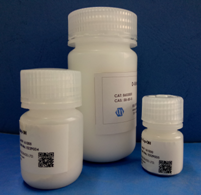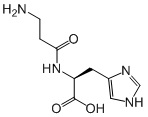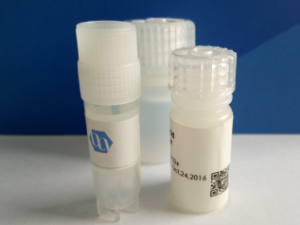$ 180.0
Quantity:5 Gram
In stock
Description
Product name: Carnosine
Catalog#: 1801001
Synonyms: Karnozin, Karnozzn, Ignotine,
CAS NO.: 305-84-0
Sequence: beta-AIa-His
M.W: 226.23
M.F.: C9H14N4O3
Assay: 99.0~101.0%
Specific Rotation: +20.0° ~ +24.0°
pH: 7.0~9.0
Counter ion: Acetate
Format: Lyophilized powder
Solution: Aqua (and) Pentylene Glycol (and) Carnosine
Description: Carnosine is present in the blood plasma of mammals and is implicated in various biologically activities: wound-healing, protection against oxidation, prevention of cataract, etc.Carnosine pretreatment significantly reduced rotations, attenuated apoptosis, and restored malondialdehyde and nitrite content and catalase activity with no significant effect on reduced glutathione (GSH). Histidine dipeptides are present in micromolar to millimolar range in the tissues of vertebrates, where they are involved in a variety of physiological functions such as pH buffering, metal chelation, oxidant and aldehyde scavenging. Histidine dipeptides such as carnosine form Michael adducts with lipid-derived unsaturated aldehydes, and react with carbohydrate-derived oxo- and hydroxy-aldehydes forming products of unknown structure. Although these peptides react with electrophilic molecules at lower rate than glutathione, they can protect glutathione from modification by oxidant and they may be important for aldehyde quenching in glutathione-depleted cells or extracellular space where glutathione is scarce. Consistent with in vitro findings, treatment with carnosine has been shown to diminish ischemic injury, improve glucose control, ameliorate the development of complications in animal models of diabetes and obesity, promote wound healing and decrease atherosclerosis. The protective effects of carnosine have been linked to its anti-oxidant properties, its ability to promote glycolysis, detoxify reactive aldehydes and enhance histamine levels. Thus, treatment with carnosine and related histidine dipeptides may be a promising strategy for the prevention and treatment of diseases associated with high carbonyl load.
Compound ID: 439224
Usage: For Scientific Research Use Only, Not for Human Use.


